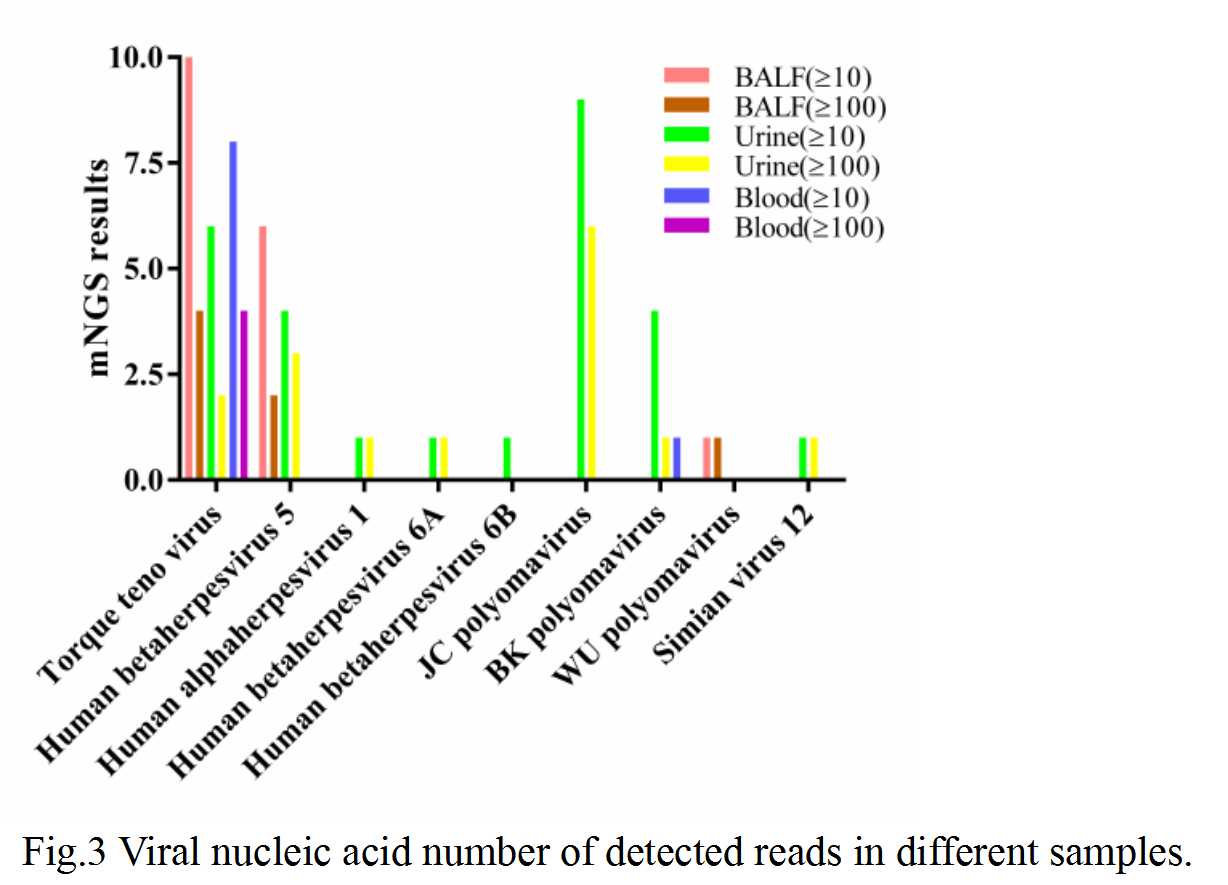Metagenomic Next-Generation Sequencing Reveals the Profile of Viral Infections in Kidney Transplant Recipients During the Covid-19 Pandemic
X. Tian, W. Duan, C. Zhang, X. Wu, T. Yan
Henan Province People's Hospital, Zhengzhou, Henan Province, China
Meeting: 2022 American Transplant Congress
Abstract number: 551
Keywords: COVID-19, Infection, Kidney transplantation, Viral therapy
Topic: Clinical Science » Infection Disease » 25 - Kidney Infectious Non-Polyoma & Non-Viral Hepatitis
Session Information
Session Name: Kidney Transplant Infections
Session Type: Rapid Fire Oral Abstract
Date: Tuesday, June 7, 2022
Session Time: 5:30pm-7:00pm
 Presentation Time: 6:40pm-6:50pm
Presentation Time: 6:40pm-6:50pm
Location: Hynes Ballroom B
*Purpose: To study the clinical application of metagenomic next-generation sequencing (mNGS) in the detection of viral infections in kidney transplant recipients (KTRs) during the COVID-19 pandemic.
*Methods: Using mNGS techniques, 50 human fluid samples of KTRs were detected in Henan Province People’s Hospital between May 2020 to May 2021, including 20 bronchoalveolar lavage fluid (BALF) samples, 21 urine samples and 9 blood samples. The detected nucleic acid sequences were compared and analyzed with the existing viral nucleic acid sequences in the database, and the virus infection spectrum of KTRs was drawn.
*Results: The viral nucleic acids of 15 types of viruses were detected in 96.00% (48/50) of the samples, of which 11 types of viruses were in BALF (95.00%, 19/20), and the dominant viruses were torque teno virus (TTV) (65.00%; 13/20), cytomegalovirus (CMV) (45.00%; 9/20) and human alphaherpesvirus 1 (25.00%; 5/20). 12 viruses (95.24%, 20/21) were detected in the urine, and the dominant viruses were TTV (52.38%; 11/21), JC polyomavirus (52.38%; 11/21), BK polyomavirus (42.86%; 9/21), CMV (33.33%; 7/21) and human betaherpesvirus 6B (28.57%; 6/21). 7 viruses were detected in the blood (100.00%, 9/9), and the dominant virus was TTV (100.00%; 9/9). Four rare viruses were detected in BALF and urine, including WU polyomavirus, primate bocaparvovirus 1, simian virus 12, and volepox virus. Further analysis showed that TTV infection with high reads indicated a higher risk of acute rejection (P<0.05).
*Conclusions: mNGS detection reveals the rich virus spectrum of infected persons after kidney transplantation, and improves the detection rate of rare viruses. TTV may be a new biomarker for predicting rejection.
To cite this abstract in AMA style:
Tian X, Duan W, Zhang C, Wu X, Yan T. Metagenomic Next-Generation Sequencing Reveals the Profile of Viral Infections in Kidney Transplant Recipients During the Covid-19 Pandemic [abstract]. Am J Transplant. 2022; 22 (suppl 3). https://atcmeetingabstracts.com/abstract/metagenomic-next-generation-sequencing-reveals-the-profile-of-viral-infections-in-kidney-transplant-recipients-during-the-covid-19-pandemic/. Accessed December 30, 2025.« Back to 2022 American Transplant Congress



